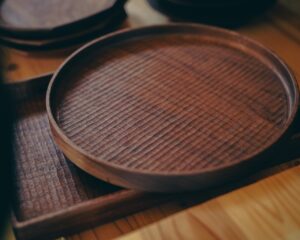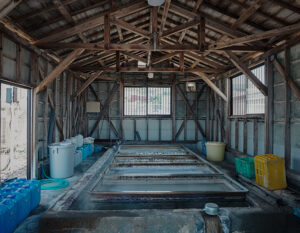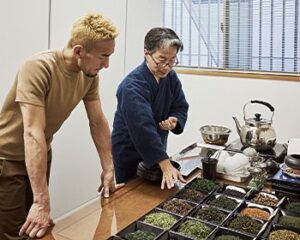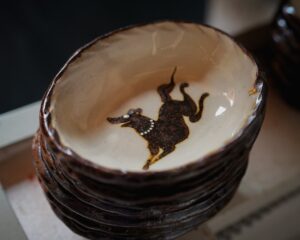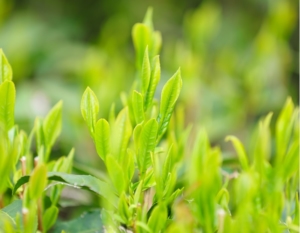Shimada Ochadokoro uses carefully selected Sogicha from Nagasaki Prefecture and Yame tea from Fukuoka Prefecture to make its original products. How do they produce their products, which have won high acclaim both in Japan and abroad, including the “Japanese Tea AWARD” and the silver prize at the “Japanese Tea Selection Paris 2020,” the only Japanese tea competition in Paris? We visited Ms. Yuko Shimada of “Ochadokoro Shimada.
The award-winning “Ochadokoro Shimada
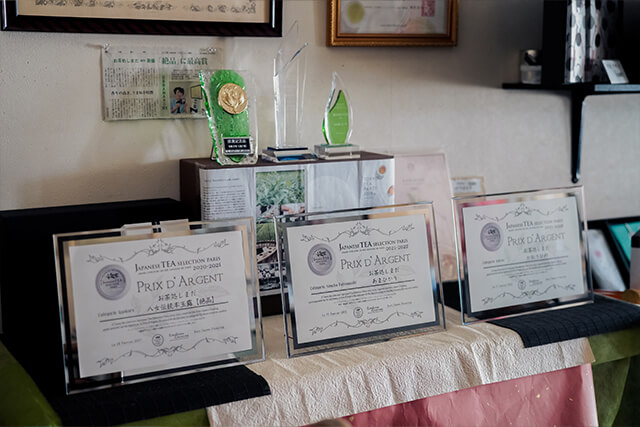
Three minutes walk from JR Isahaya Station in Nagasaki Prefecture. Located in a quiet urban area, not far from the Honmyo River, the only first-class river in the prefecture, “Ochadokoro Shimada” is a Japanese tea shop that has won many awards at domestic tea fairs such as “Japanese Tea AWARD” and the only Japanese tea competition in Paris, “Japanese Tea Selection Paris 2020” Silver Prize, and has attracted attention. The owner, Yuka Shimada, is the owner of the store.
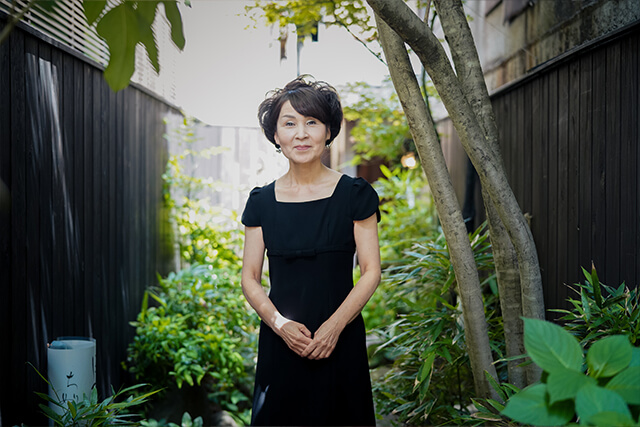
The owner, Yuko Shimada, is from Higashisonogi-cho, a production area of “Sonogicha,” which has achieved remarkable results in the steamed tama-green tea category at recent national tea fairs. She was involved in the tea business as a wholesaler, buying tea leaves directly from tea farmers, blending and processing them, and then selling them. I am the sixth generation in the family to make Japanese tea. Since I was a child, I have watched my father purchase and process tea leaves, and I have learned the importance of tea finishing and how to look at the raw leaves,” he said. The store is lined with a variety of products that Mr. Shimada carefully purchases.

I think it is important to pass on the culture and excellence of Japanese tea to the next generation. We have been creating the ideal taste of Japanese tea by utilizing the experience and knowledge we learned from our predecessors and asking for cooperation from tea growers and tea makers to find out what kind of Japanese tea consumers want.
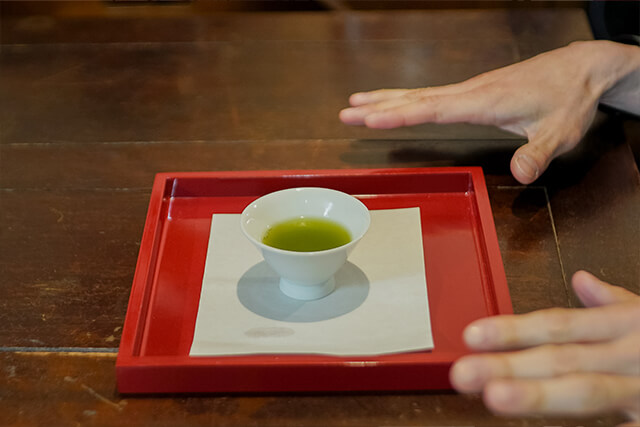
Shimada’s switch from a wholesaler to a retailer who sells directly to consumers has allowed him to directly feel the reactions of consumers. Using this strength, he communicates in detail to the tea growers his requests for the variety of tea leaves to be used, the degree of heat, and other details. His clients are producers of high-quality tea leaves in Nagasaki and Fukuoka prefectures. They are all highly skilled tea growers and tea makers with whom we have had a long relationship since the previous generation. The relationship of trust built up through the long history as a tea wholesaler is the key to the taste that Mr. Shimada pursues.
Promoting the deliciousness of Japanese tea and the beauty of tea culture
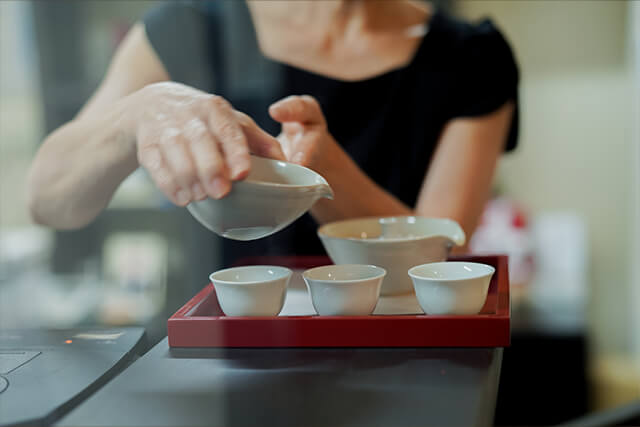
Mr. Shimada considers it his role to promote the excellence of tea culture inherited from his ancestors. While working as a Japanese tea instructor in Japan and abroad, he is constantly searching for ways to make “delicious Japanese tea” that fits modern lifestyles. For example, the development of collaborative products with local high school students is part of his activities. A variety of tea varieties including green tea, roasted tea, and brown rice tea were prepared and blended by the high school students to create “tea that high school students would want to put in their own bottles. Two things became clear from this experience. First, different generations have completely different tastes. Second, there is a need for high-quality “tea bag” products that allow students to brew tea without using a teapot. The taste of the tea they made was very weak to me. In other words, young people want tea that they can drink in gulps. After being in the tea industry for so many years, it is easy to get caught up in the umami, sweetness, and color of the tea. Of course that is very important, but it is equally important to recognize the difference in taste from what consumers, especially young people, are looking for,” he said. In light of the fact that the custom of brewing tea in a teapot is disappearing these days, the company is also focusing on the development of tea bags and instant tea products. The Japanese teabags we make are made from gauze, which allows the tea leaves to open easily when hot water is poured over them, bringing out their sweetness and aroma,” he says. While we respect Japanese teas with great flavor, water color, and sweetness that are highly evaluated at trade fairs, there should be teas that can be enjoyed casually in everyday life. While paying great respect to the efforts and techniques of tea growers who are preparing for the rigorous judging of their products, we are also seeking products that meet the needs of the times and do not fit too neatly into the old form. Mr. Shimada believes that such a light and flexible “way of Japanese tea” will lead to the further development of Japanese tea culture.
Awards and representative products of Shimada Tea House
Shimada’s main products are carefully selected “Sonogicha” from Nagasaki and “Yamecha” from Hoshinomura, Fukuoka. The wide range of products from top-quality teas to daily-use leaf teas, mizusashi teas, tea bags, and instant teas is attractive. The following three products are particularly noteworthy.
Yame Traditional Hon Gyokuro “Zesshin”.
The 2019 product won the Japanese Tea AWARD Grand Prize and the Minister of Agriculture, Forestry and Fisheries Award, while the 2020 product won the Silver Prize at the Japanese Tea Selection Paris, the only Japanese tea competition in Paris. The rich umami and aroma of this tea envelops the palate the moment it enters the mouth, and is a masterpiece of artisan craftsmanship that combines tradition and innovation.
Yame Sencha “Tsuyu Torori
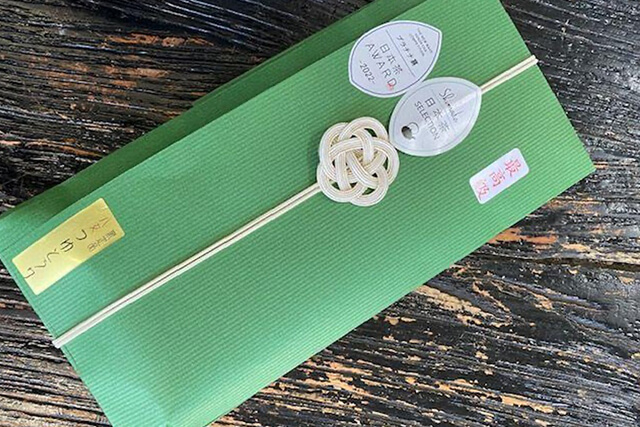
Made in 2022 won the Platinum Award in the Gogumi Sencha category at the Japan Tea AWARD.
By blending varieties characterized by rich flavor, deep taste, etc., the aroma and flavor are at their best. You can enjoy a trolley of well-balanced tastes.
Roasted tea “Kaorihime
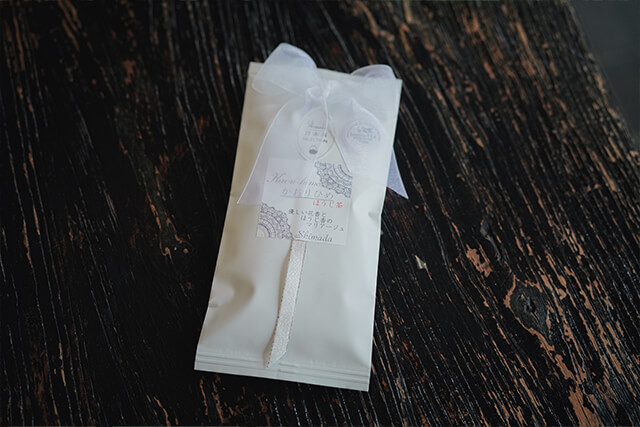
This green oolong tea is lightly wilted and carefully roasted to bring out its gentle and elegant floral and roasted aroma. It won the Silver Award at the 2021 Paris Japanese Tea Selection and the Platinum Award in the hojicha category at the 2022 Japanese Tea AWARD.
Pursuing the Future of Japanese Tea
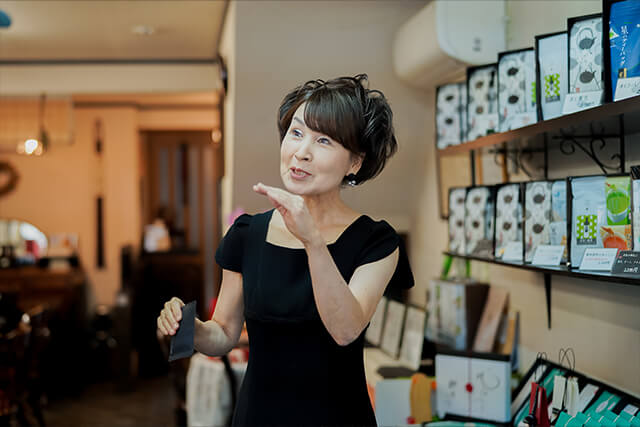
Mr. Shimada’s goal is to create Japanese teas that fit comfortably into the modern Japanese lifestyle. First of all, he is developing teabags and mizudashi teas that can be brewed without using a teapot, with the aim of making it easy to enjoy Japanese tea in everyday use. On the other hand, however, there are many people who want to fully enjoy the individuality of high quality Japanese tea by brewing it in an authentic way. I am in a position to listen to the voices of both consumers and producers. I am in a position to listen to both consumers and producers, and I will continue my efforts to create “tasty and pleasant Japanese tea” for a wide variety of targets by incorporating the opinions and requests of both parties and actively reflecting the opinions of those outside the tea industry.
Until the establishment of the Sogicha Promotion Council about 35 years ago, Japanese tea from Nagasaki Prefecture was sold as “Ureshino-cha” from Saga Prefecture. Today, however, the presence and brand power of Nagasaki tea is growing by the day, as evidenced by the fact that Sonogicha won first place in Japan in the steamed tama green tea category at a national tea fair. The growers are very positive and have high skills and abilities. If we can work together with them to set clear taste goals and achieve them, I think Japanese tea will become even more interesting,” says Mr. Shimada. He continues to promote Japanese tea culture to consumers with respect for tea producers and passion and love for Japanese tea, while cherishing the ties that his predecessors have built as a tea wholesaler. We see a bright future for the Japanese tea industry in Mr. Shimada’s cheerful and flexible attitude as he continues to take on the challenge of “making delicious tea.





